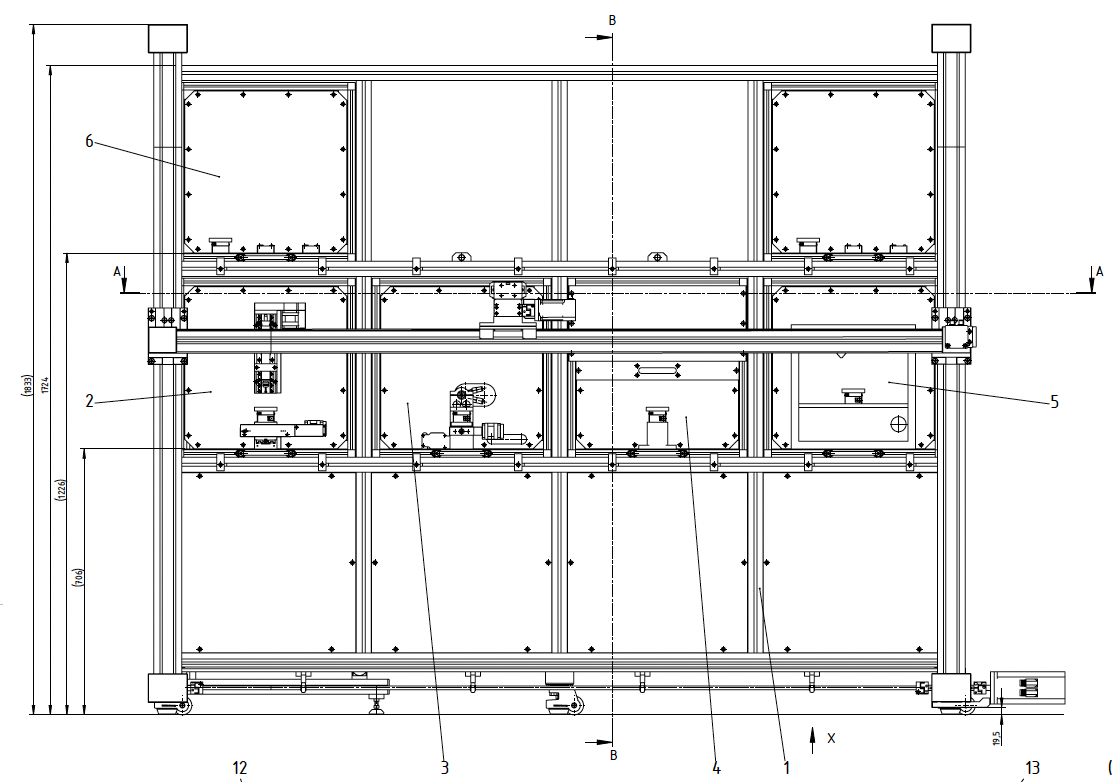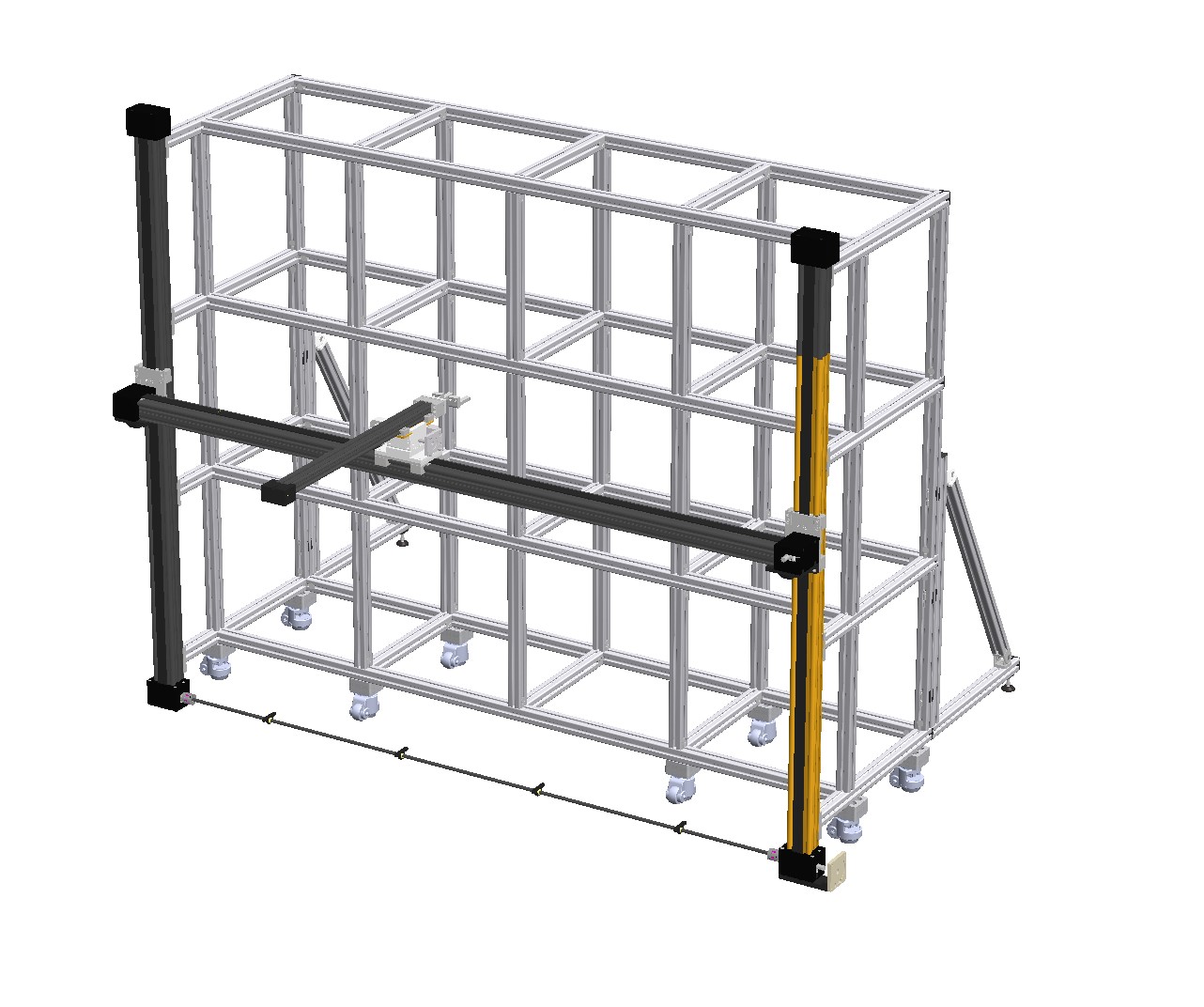Rapid-Prototyping of Rapid-Prototyping Machines:
How to Make Something that Makes (almost) Anything
The aim is to build a machine that makes (almost) anything. Previously after taking Fab Academy in 2018, a class that taught me how to make (almost) anything. I believe in and possess a superpower to make almost anything. I find great joy in the process of creating.
The project will beyond after the class MAS.865 2024 building a real life fabricator.
“It’s a fabricator It can analyze, design, construct basically anything.” ― Peter Parker to Norman Osborn (Spider-Man: No Way Home)
The idea of a fabricator is reminiscent of the Replicator from Star Trek, which could produce almost any object on demand.

Micro FabLab with cartesian coordinate sytem.

3D CAD of Micro FabLab with cartesian coordinate sytem.
Goal: Create a machine that integrates various single-purpose modular machines like 3D printers, CNC milling machines, lathes and laser cutters to create almost anything.
Spiral Development
Micro FabLab
One of Neil's best pieces of advice is to create something that function first, and then work on improving it.
Phase 1: Cartesian Coordinate SystemMoving x and y linear joints of cartesian coordinate sytem.
Moving x, y and z linear joints of cartesian coordinate sytem.
To-do:
- Move three linear joints (X,Y and Z).
- Wire management.
- Graphical User Interface to move cartesian coordinate system end effector.
Create an automated 3D printing farm with modular printers that dispense finished products.

3D CAD of Fab in a box with cartesian coordinate sytem and a 3d printer.
Bonus goal: The machine should have the capability to fabricate a Pico Neo (Fablab 2.0).
Black and white Pico Neo are produced in Openlab Hamburg..
Todo:
- The design is based on OLSK Small 3D Printer V2 and has been modified.

3D CAD of a 3d printer.
Standing on the Shoulders of Giants
Not reinventing the wheel.
-
Machines
- Open Source Digital Fabrication Machines for Fab Labs (OLSK) Networking
- Machine-Monitoring
Use Cases
What are the potential applications and benefits of using the machine?
- Microfactory
- Self-replicating machine Self-replicating machine use raw materials to reproduce autonomously.
Microfactories are revolutionizing the manufacturing process by automating most of the steps and building products in a cell, rather than on a production line. Unlike traditional factories, which tend to be larger and less flexible, cells can be easily modified to produce different products by simply changing the instructions. The trend of microfactories toward smaller, more adaptable manufacturing spaces is changing the face of manufacturing as we know it.
Today, large-scale factories are still necessary to produce goods in the most efficient manner possible. However, we believe that having smaller factories in urban environments can be a cost-effective solution for producing various types of products, considering factors such as transportation and circular economy.
Next, we should test the market to see if the concept behind microfactory is practical. Microfactory produces goods efficiently and locally.
Special Thanks to
-
The MIT Center for Bits and Atoms
- Neil Gershenfeld Helmut-Schmidt-Universität - Universität der Bundeswehr Hamburg
- Tobias Redlich
- Manuel Moritz
- J.C. Mariscal Melgar Inmachines
- Daniele Ingrassia
- Wilhelm Schütze
- Alberto Porri